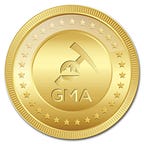From gold backed to confidence backed: a history of the US Dollar
By Reuben Machinga
Have you ever wondered why the United States Dollar got to be the world’s reserve currency? If you answered yes, I’ll tell you why: it’s gold. To understand the story fully, we have to go back into our financial history and look at the changing relationship between the gold and the dollar. After that, we have to ask if the dollar is still good.
The United States Dollar is arguably a symbol of wealth and prosperity across the world. No hip-hop music video would be quite complete without American currency making an appearance on the screen.
To explain the dollar’s symbolic power, we have to understand its past. For the sake of brevity, let’s start off before the World Wars. How different nations traded between each other is a question that has always been on my mind. I’ve written about it before. Here, however, I can offer the answer in more concrete terms. International trade was made possible by a gold standard. Because paper currency was a representation of gold in a vault somewhere, trade was straightforward. Effectively, this served as a fixed exchange rate mechanism since it was clear how much gold could be redeemed for each paper note. Uncertainty was done away with since currencies were representations of the same thing (gold).
War does away with any state’s pretence to fiscal discipline. In the face of obliteration, in the face of World Wars, fiscal discipline may have proved suicidal. European nations felt limited in their options. Debasing their currencies and printing more paper notes to fund the war effort appeared logical to them. Along with having their currencies divorced from gold, European nations’ industrial capacity was also decimated.
While the United States played a significant role in the two World Wars, the theatre of war was in Europe. This left American industrial capacity intact. When debts owed to her were being repaid, in gold, they also came out of the two World Wars with the most gold reserves out of the industrial nations of the world. America managed to steer other countries to peg their currencies to its dollar. In this immediate post-WWII environment, America maintained the gold standard and having other currencies pegged to its currency made international trade possible.
The burden of war soon visited the United States after WWII. The government had to spend incredible sums of money to fund the campaign in Vietnam. In the midst of having to foot this large bill, the French government kept on ‘cashing in’ their dollars for gold. Soon, the open market price for gold was higher than the American government stipulated price of $35 per ounce. Foreign governments had an arbitrage opportunity open to them. America could not continue to defend this price while meeting all her other financial obligations.
This, in 1971, led to what economic historians refer to as the Nixon shock. Announced as a temporary measure, gold could no longer be redeemed using the American dollar. As is the course with many state ‘temporary’ measures, it became permanent. The gold standard was abandoned for good. Up until now, one cannot exchange their dollars for gold at the Federal Reserve.
Now that this is the state of affairs, do we want to hold on to dollars as a means of holding on to value over the long term? I suspect not. Ever since the ’71 Nixon Shock, the dollar has lost 98 per cent of its value. The drop hasn’t been dramatic since it didn’t happen all at once. Rather, it has been consistent over time.
One asset that has not only held its value during this same time period, but also greatly increased in value, is gold. You’d much rather hold that long term than paper money. Gold has held its own for millennia while no fiat currency has ever maintained, or appreciated in value for centuries.
For more information about our project, please follow us on
